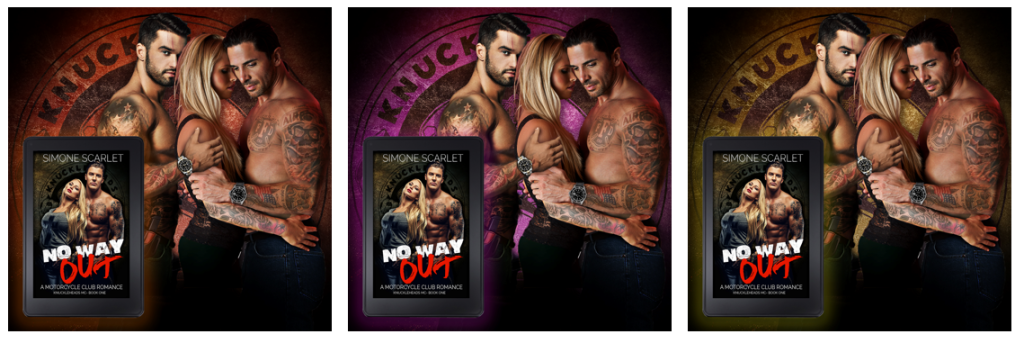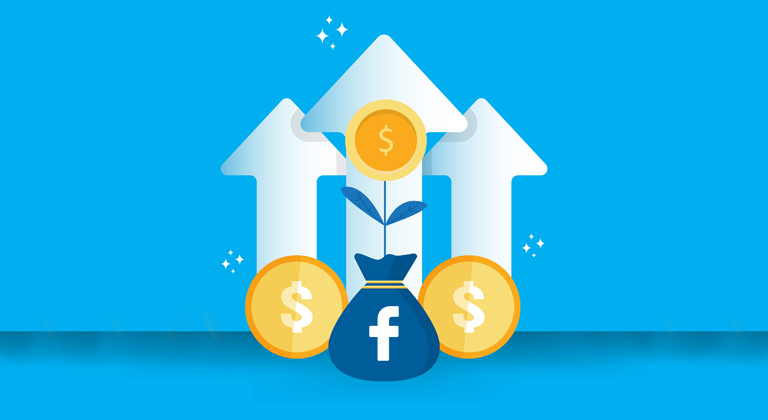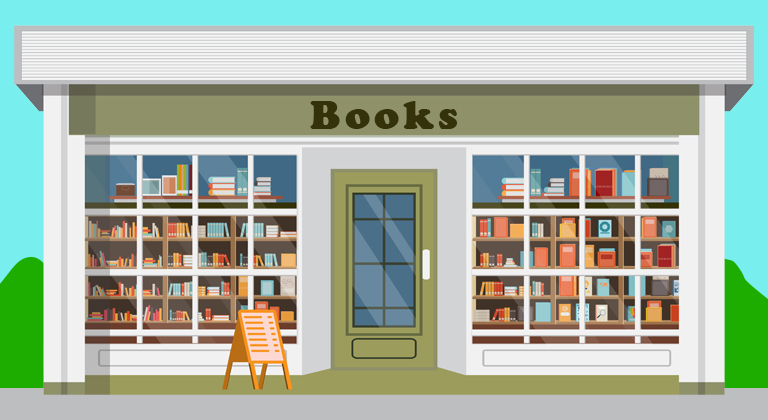Does Running More Facebook Ads Produce Better Results?
Last week, we explored a question that many self-published authors grapple with: does increasing your ad budget directly lead to better sales metrics? While this strategy can yield results, it’s not without its risks. It also raises a less-discussed—yet equally important—question: regardless of your budget, could you increase sales simply by running multiple Facebook ads for the same book?
As Ginger explores in this week’s blog, this isn’t about blindly multiplying your efforts and hoping something sticks. Instead, it’s about understanding the psychology of effective advertising and why diversifying your ad approach can have a significant impact. From the timeless “seven touches” rule to features built right into Facebook’s Ads Manager, Ginger breaks down why running more ads can deliver better results—and how you can easily implement this strategy without needing to redesign your creative from scratch.
Last week, I wrote about how increasing your advertising budget could have a dramatic effect on your Facebook ads – a risky strategy that pays off consistently for big name authors, but might be too much of a gamble for us regular folk.
(Because remember the golden rule! You should never spend money on advertising that you can’t afford to lose!)
But it did prompt some further questions about how to improve the results of your Facebook ads, and one that I think more self-published authors should be aware of is how having more ads running can sometimes make a dramatic and positive impact on your results.
It’s something that surprises some people to hear – especially since most people think that audience and budget are more important variables when it comes to ad performance. However, there are some really solid reasons why more ads will generally produce better results, and I think it could be valuable to cover them in this week’s blog post.
Lonesome Ads
At surface level, running Facebook ads looks deceptively simple. So simple, in fact, that a lot of self-published authors feel confident enough to jump into advertising on Facebook without an extensive understanding of ecommerce or advertising in general.
However, there’s actually a lot more to it than just choosing a post from your Author Page to boost and then selecting a budget. That approach often leads to disappointing results, because Facebook aren’t shy about taking your money whether these “boosted posts” work for you or not.
Sophisticated ecommerce professionals bypass the easy advertising options entirely and are experts with the Ads Manager dashboard instead, hidden over at business.facebook.com. This dashboard offers much more sophistication in terms of designing your ads, selecting an appropriate audience, and measuring performance.
Using that dashboard, really successful advertisers sometimes run dozens of campaigns and hundreds of ads in order to squeeze out as much profit from their sales funnels as possible, and we can learn a lot by studying their example.
Why are more ads better than a single boosted post, or a solitary ad? That comes down to how advertising works at a fundamental level – something that most people are (understandably) not too familiar with. Getting Facebook users to stop scrolling, read your ad, and then hopefully click on it involves applying a lot of psychological leverage that often isn’t possible with a single post. Effective advertising is a lot more holistic than that.
Old School Advertising
Modern day advertisers are kind of spoiled. Today, we can run ads on Facebook, Amazon, and Google and follow a trail of digital breadcrumbs that appear to show us the entire journey it took for a customer to go from first-click to final-purchase.
However, this isn’t really how advertising works – and it only appears to show the entire journey. In reality, it’s actually really rare for somebody scrolling through Facebook to see an ad for the first time and click on it immediately. It’s even rarer for them to buy whatever that ad is offering the first time they visit the landing page (although it does happen – I bought my wife a lovely set of earrings that way.)
Truth be told, the real wisdom in advertising was developed back in the 1950s and 1960s, before the days of attribution tags and pixels. In those days, companies would plaster ads in newspapers, on billboards, and in radio commercials and just hope for an influx of new business.
If you suddenly had a sales rush, it could be because of that new billboard in Times Square. Maybe it was the new commercial with that baseball star. Perhaps it was the ad squeezed onto the last page of the daily newspaper. It was very difficult to tell for sure – leading some advertisers to warn: “Only 50% of your advertising budget will work – and the problem is, it’s impossible to tell which 50%.”
But what was more likely to happen, however, was that a potential customer would see more than just one ad. They’d spot the billboard in Times Square on their way to work, hear the commercial with that baseball star while they were eating their pastrami and rye at lunchtime, and then see the ad in the paper while they were reading it on the train home – ultimately only deciding to buy the product after seeing it advertised on multiple occasions in multiple different places.
In advertising agencies, they call it “the seven touches” – the belief that somebody would have to see a product advertised seven separate times before they decided to take the plunge and actually buy it. That’s why companies like Geico and Coca-Cola have ads on television, in magazines, on billboards, and even in banners being pulled by airplanes flying over the beaches every summer (I see them at the Jersey Shore every July and wonder: “Geico? Do those banners really work?”)
Exactly the same theory seems to work in modern digital advertising. Customers often have to see a product advertised on multiple occasions before they actually click on it – and they might click back on several different ads for the same product before they actually buy it.
So if you’re only running a single digital ad, you’re automatically limiting yourself to just one of those “seven touches” – and that remains true even if a potential customer sees that same ad multiple times.
The real power in advertising comes when customers see the same product advertised in multiple different places, in multiple different advertising formats – giving them the opportunity to be “touched” seven magical times (wait, that sounds a bit creepy when I say it that way.) That’s why running more than just a single ad will almost always yield better results.
So regardless of your budget, or whether you’re running Sales ads or Traffic ads, having more ads is pretty much guaranteed to be a good idea – and here’s how to do it.
Multiple Ads, Multiple Formats
Facebook can be duplicitous. While they eagerly encourage rookie advertisers to experiment with “boosted posts” and other less effective forms of advertising, they have the rule of “the seven touches” automatically baked into their advertising platform. When you go to Ads Manager and start advertising for the first time, they’ll automatically prompt you to upload three formats of image or video to create your ads.
There’s a 1:1 “square” ad that will appear in most places on Facebook and Instagram – most commonly the feed that users scroll through. Then there’s a 9:16 “story” format ad, which will appear in Reels and Stories. Finally, there’s a 16:9 “landscape” ad that will appear in Messenger, Marketplace, and a whole host of other more obscure placements on Facebook.
The format looks something like this:

The theory behind having these three different sizes of image or video is the same theory that led to Geico paying for billboards, newspaper ads, and those funny banners being flown behind airplanes: The more places your ad appears, the more people will have the opportunity to see it.
If you’re able to provide Facebook with multiple variations of your ad image or graphic, that’s the same thing they’ll offer you. Facebook users might see your ad in their Feed one day, hidden among the Reels they scroll through the next, and then finally popping up in Marketplace while they’re looking for a second-hand dishwasher, or whatever. To a limited extent, this helps deliver on those “seven touches” we spoke about earlier – albeit each of those “touches” essentially showing the same ad.
Likewise, Facebook provides you with the opportunity to provide up to five different variations to the copy you use in your ad – five different headlines, captions, and descriptions that ensure that most users who see your ad more than once will see different taglines each time they do.
Together, this automatically delivers multiple variations of the same ad without much additional work from the advertiser – but to be really successful, you should take it further than that. Instead of having one ad that can appear in multiple different places, with multiple variations of your sales copy, imagine how much more effective it would be if you had multiple ads that can appear in multiple different places, with multiple variations of the sales copy in each one.
Producing Multiple Facebook Ads
Producing multiple different ads isn’t as daunting a prospect as it might sound. Obviously, you could produce a number of completely different ads, with completely different images and copy – but you don’t always need to go that far.
The goal is to show a familiar sales message to your audience, just in a new way that makes it count as a separate one of those “seven touches.” A great example of this is how I will often run two identical ads, but have one use static images and the other use an animated version of that ad (as I found out last week, video ads consistently perform better on Facebook – but static ads shouldn’t be dismissed entirely, as they sometimes work better in different placements.)
Likewise, I’ll sometimes use the same graphics for an ad, but make a dramatic change to the color palette – once again delivering a familiar ad to anybody who’s seen it already, just in a new and memorable way.
For example:

You don’t need to overthink this process. In fact, it can sometimes be counter-intuitive to overthink it! You might think there’s nothing so special about changing the color palette of an ad, but it’s important to remember that the need for a “new” ad that delivers a separate one of those “seven touches” also needs to remain familiar enough for somebody seeing it to make the connection between the ad they originally viewed and this “new” one.
So if you produce three different color versions of the same graphic, in each of the three sizes Facebook recommends, you’ve already produced nine different versions of that ad. Make a video version of each one and that multiplies into 18 potentially different versions of the same ad. Throw in those five potential variations of tagline and headline and you’ve got 90 different ways the same sales message could appear!
How’s that for hitting those “seven touches” folks?
Decades of wisdom shouldn’t be ignored, and when it comes to advertising, the rule of “the seven touches” is difficult to ignore. That’s why you should always make the most of the opportunity to upload new ads, and max out the potential variations of each new ad you produce.
Your entire advertising campaign will have the potential to be so much more effective if you do – being able to show striking and memorable variations of your ad in many different places, each one counting as a separate “touch” to a potential customer.
It can also be a lot of fun! Playing around with graphics, videos, and color palettes is a chance to try something different to the cerebral work of writing and the number-crunching of advertising and publishing. I find it a refreshing break, and producing new variations of my advertising often gets me reinvigorated about the books I’m trying to sell – reminding me of why I wrote them in the first place.
The fact that self-published authors have the opportunity to reach millions of potential readers is crazy to me – it’s never happened before in the history of literature. This is an opportunity we should be grateful for – and always maximize to the fullest.












Thanks for this blog post! The mystery of Facebook advertising is starting to be a little clearer to me.